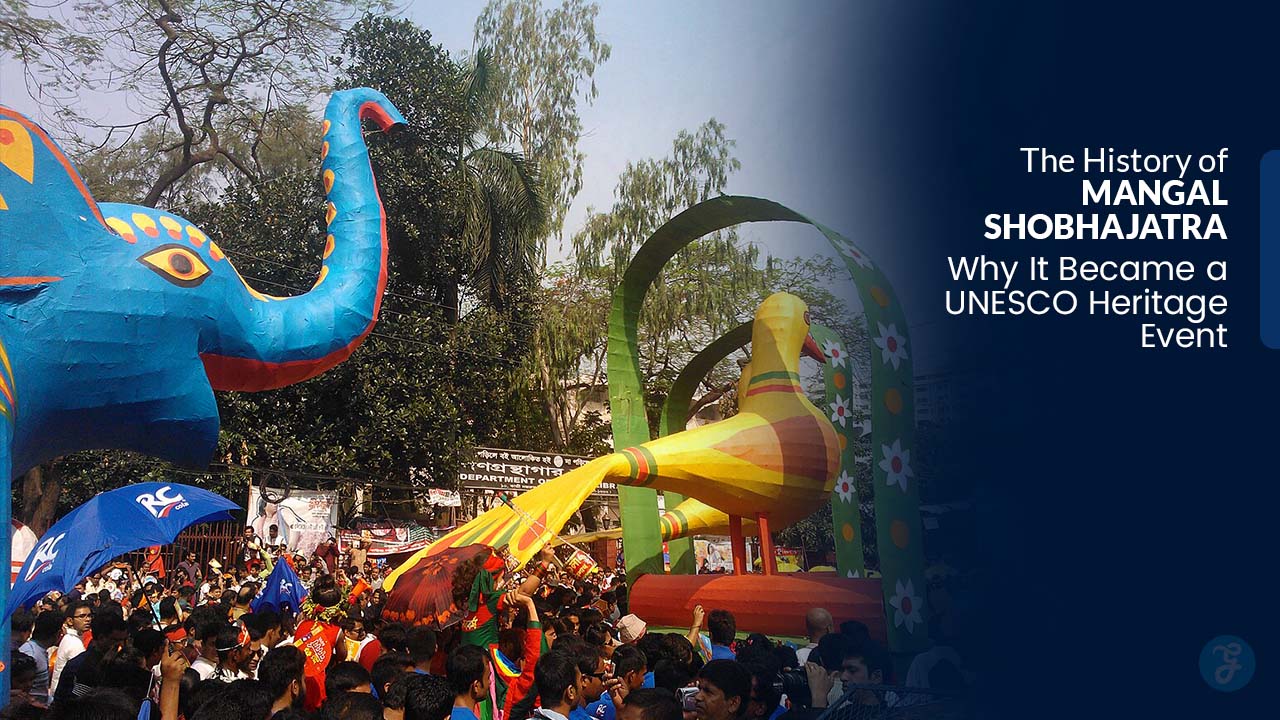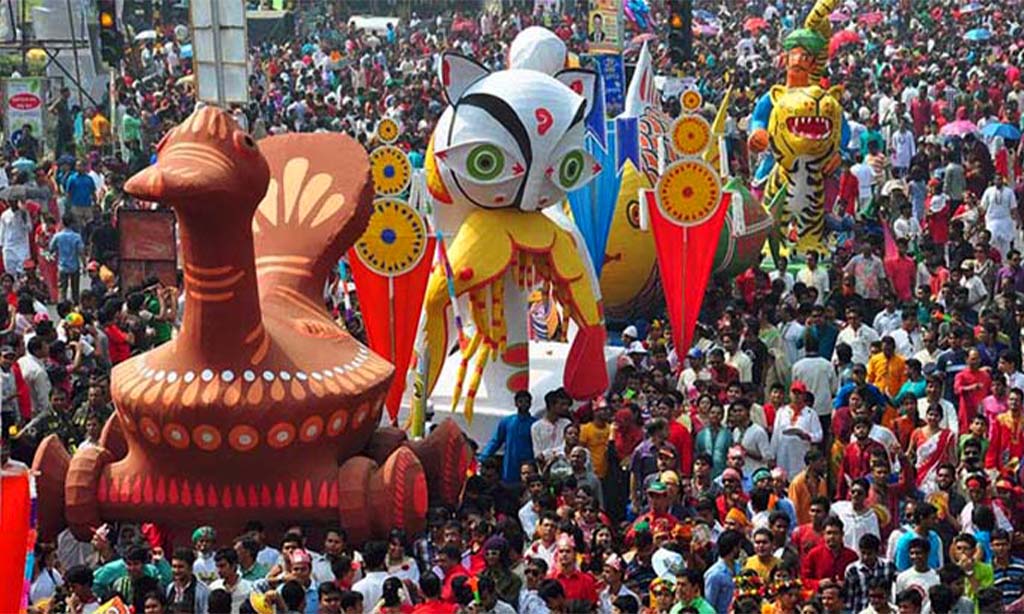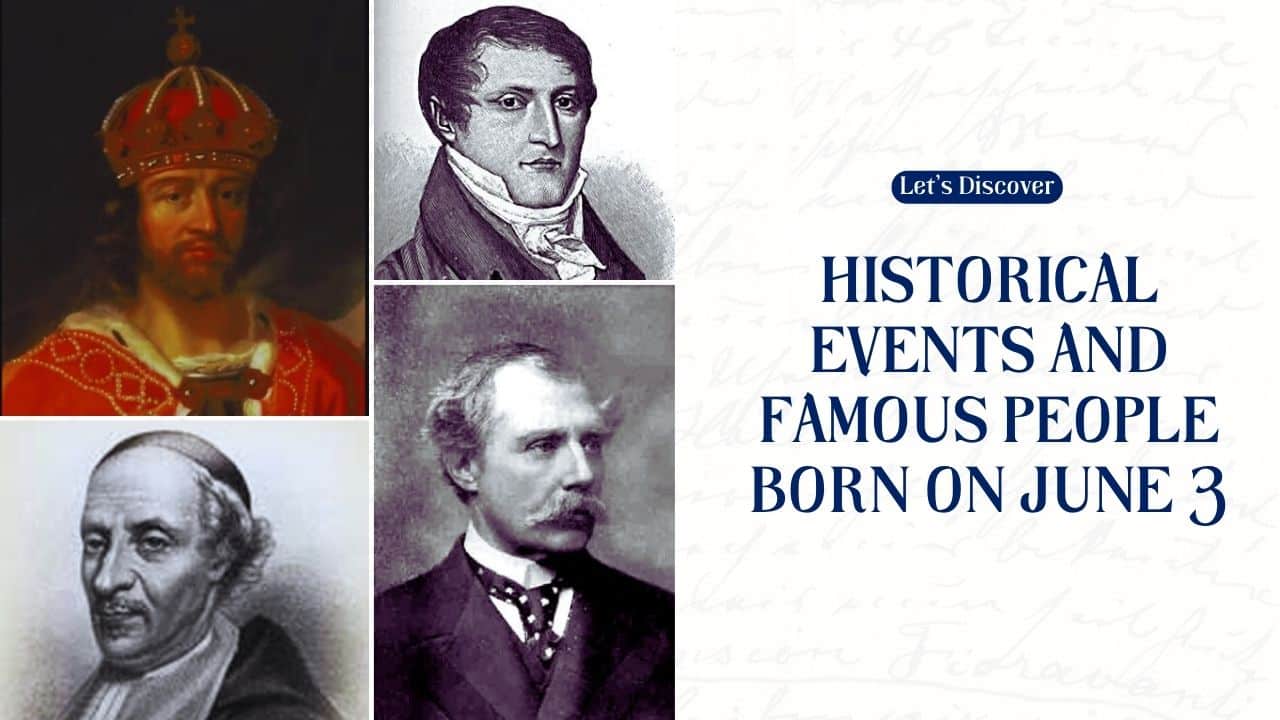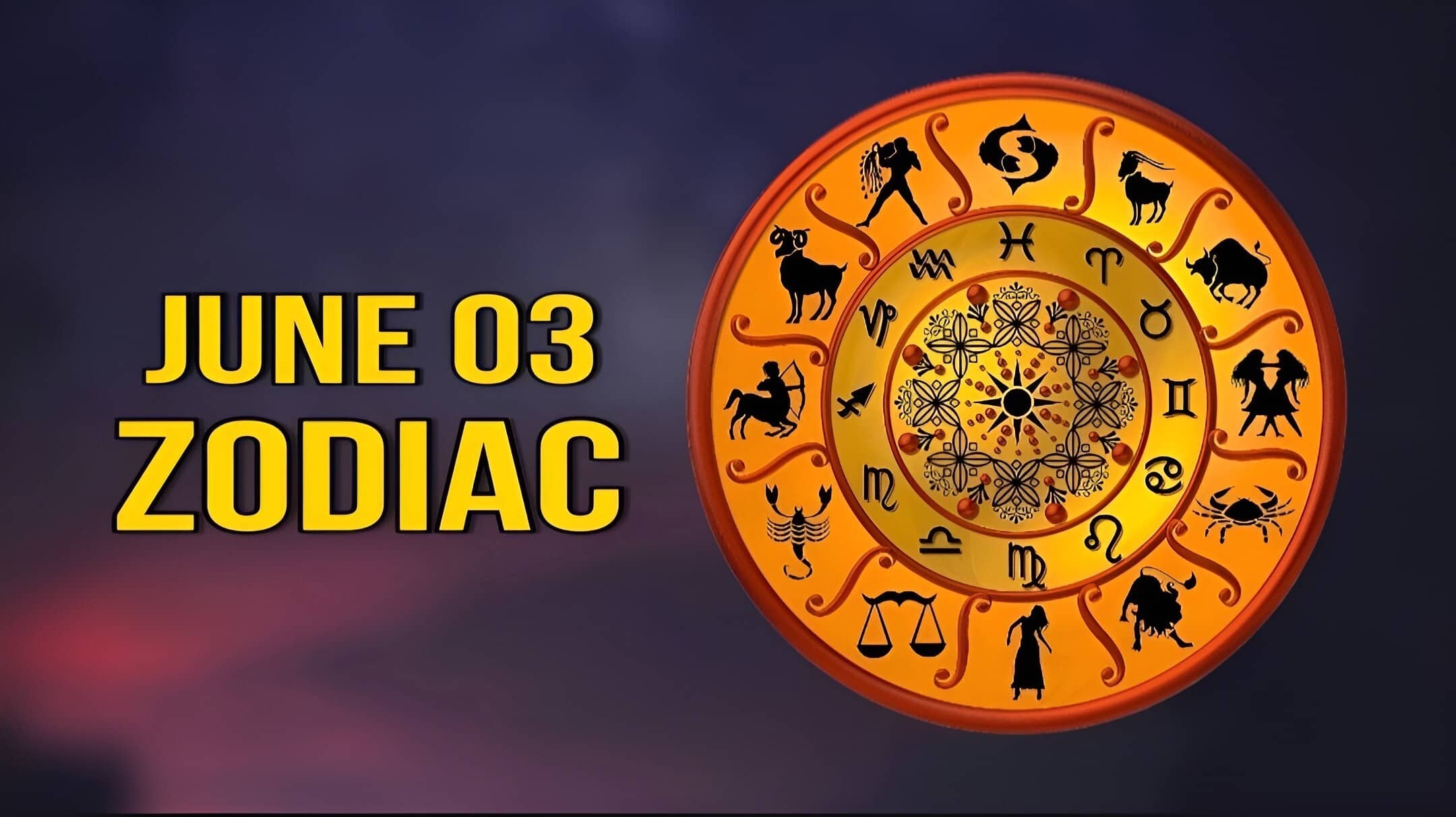Many people want to learn about special festivals around the world. One such event is Mangal Shobhajatra. This festival happens in Bangladesh during the Bengali New Year. It started in 1989 as a bold way to stand up against military control.
The History of Mangal Shobhajatra includes art, culture, and a fight for freedom. In 2016, UNESCO said it was an important part of the world’s cultural heritage. Our blog will tell you why this event is so special and what makes it recognized worldwide.
Read more to discover this unique tradition!
Key Takeaways
- Mangal Shobhajatra began in 1989 by Dhaka University students as a protest against military rule. It celebrates the Bengali New Year.
- UNESCO added it to the Intangible Cultural Heritage list in 2016 because it shows cultural pride and unity.
- The festival has evolved from a religious procession to a large cultural celebration across Bangladesh.
- There’s debate about renaming it “Barshabaran Ananda Shobhajatra,” but many want to keep the original name for its historical significance.
- The event promotes peace, tolerance, and reflects Bangladesh’s struggle for freedom through art and music.
The History of Mangal Shobhajatra
Mangal Shobhajatra started in 1989. Students and teachers from Dhaka University’s Fine Arts Faculty created it as a protest against military rule.
Initiated by students and teachers of Dhaka University’s Fine Arts Faculty in 1989
In 1989, students and teachers from Dhaka University’s Fine Arts Faculty started Mangal Shobhajatra. This event grew from a protest against military rule in Bangladesh. At that time, Hussain Muhammad Ershad was the autocratic ruler.
The procession marked the first day of Bangla New Year. It became a powerful symbol of resistance and cultural pride for the people of Bangladesh.
The festival brought together art, creativity, and unity among the community. Participants expressed their hope for peace and change through colorful displays and folk art. Mangal Shobhajatra has roots that trace back to Mughal rule, showing its deep historical significance in Bangladeshi culture.
Protest against military rule
Mangal Shobhajatra began in 1989. It was started by students and teachers at Dhaka University. They wanted to protest against the military rule of Hussain Muhammad Ershad. The festival aimed to bring people together and express their desire for freedom.
During this time, many faced harsh conditions under autocratic leadership.
The vibrant procession on the first day of Bangla New Year represents unity and cultural pride. It shows how people can come together to celebrate their heritage despite oppression.
Mangal Shobhajatra has grown into a symbol of resistance and strength for Bangladeshis. Communities join hands every year to honor this tradition while celebrating peace and tolerance through joyful rituals.
Evolution of Mangal Shobhajatra
Mangal Shobhajatra grew from a small event to a large celebration over the years. It became more than just a religious parade; it turned into a vibrant cultural festival that everyone enjoys.
Spread to other parts of Bangladesh in the 1500s
Mangal Shobhajatra spread to other parts of Bangladesh during the 1500s. It started as a small celebration and grew into a bigger event. This festival has roots back to the Mughal rule in Bangladesh.
Over time, it became more than just a religious procession. People began to see Mangal Shobhajatra as a cultural celebration.
This change showed the pride people have in their folk heritage. The festival now includes vibrant colors and joyful music. It unites different communities while marking the start of Bangla New Year on Pahela Baishakh.
Today, it stands as a symbol of resistance and cultural pride for all Bangladeshis.
Evolution from religious procession to cultural celebration
Mangal Shobhajatra started as a religious procession. It began in 1989, during the presidency of Hussain Muhammad Ershad. Students and teachers from Dhaka University’s Fine Arts Faculty organized it as a protest against military rule.
Over time, it changed into a lively cultural celebration.
The festival spread across Bangladesh and embraced new ideas. People came together to celebrate Bengali New Year, known as Pohela Boishakh. Mangal Shobhajatra now shows unity and diversity within the community.
This vibrant event reflects pride in Bangladeshi folk heritage and symbolizes strength and courage against oppression.
Significance of Mangal Shobhajatra
Mangal Shobhajatra shows the strength of unity and diversity in Bangladesh. It is a joyful celebration that marks the start of the Bengali New Year and promotes peace and acceptance among people.
Symbol of unity and diversity
Mangal Shobhajatra is a strong symbol of unity and diversity in Bangladesh. This vibrant festival began in 1989, during a time of military rule under Hussain Muhammad Ershad. Dhaka University students and teachers started the event as a protest.
They wanted to promote peace and tolerance among people.
The celebration brings together many Bangladeshis from different backgrounds. People come together to enjoy colorful parades filled with masks, floats, and music. Every participant shares their love for folk heritage.
Mangal Shobhajatra shows how people can unite despite their differences. It celebrates Bengali New Year while highlighting cultural significance across communities in Bangladesh.
Celebrates Bengali New Year and the values of peace and tolerance
Mangal Shobhajatra celebrates the Bengali New Year. It takes place on the first day of Bangla New Year. This vibrant procession began in 1989. It started as a protest against military rule in Bangladesh under Hussain Muhammad Ershad.
People come together to show their pride and cultural heritage. The event promotes values of peace and tolerance among diverse communities.
The festival brings joy and unity each year. Participants express hope for a better future through art, music, and dance. Mangal Shobhajatra now symbolizes not just the new year but also resilience against oppression.
This celebration emphasizes community strength while embracing cultural diversity across Bangladesh.
Recognition as a UNESCO Heritage Event
In 2016, Mangal Shobhajatra gained recognition from UNESCO. This honor highlighted its cultural and historical importance.
Inclusion in UNESCO’s Representative List of the Intangible Cultural Heritage of Humanity in 2016
Mangal Shobhajatra became part of UNESCO’s Representative List of the Intangible Cultural Heritage of Humanity in 2016. This recognition shows its cultural and historical value. The festival began in 1989 as a protest against military rule under Hussain Muhammad Ershad.
It has grown to become a lively celebration of the Bangla New Year.
UNESCO’s inclusion highlights Mangal Shobhajatra as vital to Bangladesh’s living cultural heritage. It symbolizes the pride, strength, and courage of the people. Despite challenges from fundamentalist groups, this vibrant procession continues to thrive.
Its history proves that it is more than just a traditional festival; it represents resistance and unity among diverse communities in Bangladesh.
International recognition of its cultural and historical value
Mangal Shobhajatra received international recognition in 2016. UNESCO declared it an intangible cultural heritage. This event is listed as a heritage of humanity. It highlights the cultural and historical value of this vibrant celebration.
The festival began in 1989 during the presidency of Hussain Muhammad Ershad as a protest against military rule.
People celebrate Mangal Shobhajatra on the first day of Bangla New Year. The event is full of colorful processions that reflect pride in Bangladeshi folk heritage. This celebration shows strength and courage, even amid challenges.
Attacks from fundamentalists could not stop its growth as a symbol of resistance and community spirit.
Controversies and renaming
Some people want to change the name of Mangal Shobhajatra to “Barshabaran Ananda Shobhajatra.” Many believe keeping the original name is vital for its meaning and tradition.
Recent controversy over renaming to “Barshabaran Ananda Shobhajatra”
Recent controversy arose over the idea of renaming Mangal Shobhajatra to “Barshabaran Ananda Shobhajatra.” Some groups claim this new name better reflects the festival’s spirit. However, many people believe it is crucial to keep the original name.
Mangal Shobhajatra has deep roots in Bangladesh’s struggle against military rule. It symbolizes unity and cultural pride.
The tradition began in 1989 at Dhaka University as a protest against autocratic leader Hussain Muhammad Ershad. Despite challenges from certain fundamentalist groups, Mangal Shobhajatra continues to thrive as a vibrant celebration on the first day of Bangla New Year.
Preserving its original name helps maintain its historical meaning and significance within Bangladeshi cultural traditions.
Importance of preserving the original name and its meaning
The name “Mangal Shobhajatra” carries deep meaning. It symbolizes joy and good wishes for the Bengali New Year. Changing its name to “Barshabaran Ananda Shobhajatra” can lose this essence.
The original name reflects a strong connection to Bangladesh’s history and culture.
This festival began in 1989 as a protest against military rule under Hussain Muhammad Ershad. Keeping the original name honors that struggle for freedom and expression. Mangal Shobhajatra represents strength, courage, and pride in folk heritage.
Preserving it helps maintain its significance as an important cultural event recognized by UNESCO’s Intangible Cultural Heritage list since 2016.
FAQs on the History of Mangal Shovajatra
1. What is the history of Mangal Shobhajatra?
Mangal Shobhajatra is a traditional festival with a rich history. It’s known for its community celebration and symbolism, including the Mangalpradeep ritual.
2. Why did UNESCO recognize Mangal Shobhajatra as an Intangible Cultural Heritage event?
UNESCO recognized this tradition because it embodies cultural heritage that’s important to preserve. The recognition helps protect and promote this unique community celebration.
3. How does the tradition of Mangal Shobhajatra contribute to its UNESCO recognition?
The tradition of Mangal Shobhajatra, from its symbolic rituals to its vibrant community celebrations, showcases distinctive cultural practices worthy of UNESCO recognition.
4. What are some key features of the Mangal Shobhajatra festival that led to its UNESCO recognition?
Key features include the traditional festivals’ unique symbols like the Mangalpradeep ritual and their importance in fostering communal unity – factors which contributed significantly towards earning them a place on the coveted list of UNESCO Intangible Cultural Heritages.












































